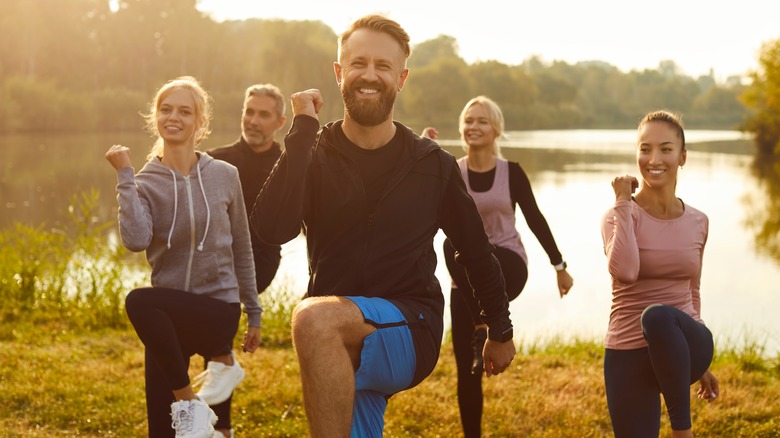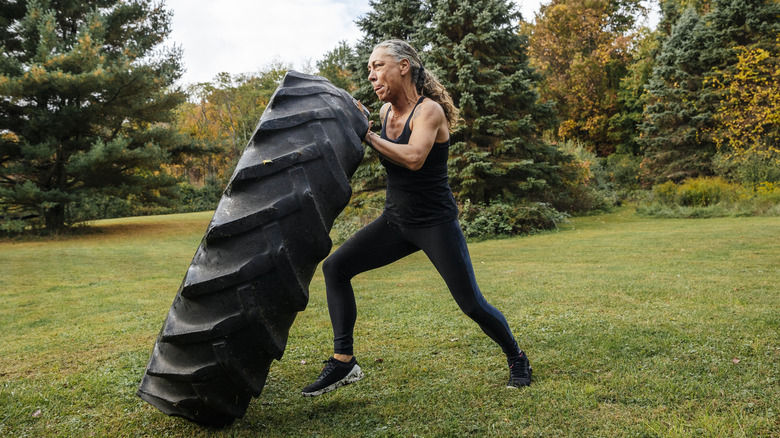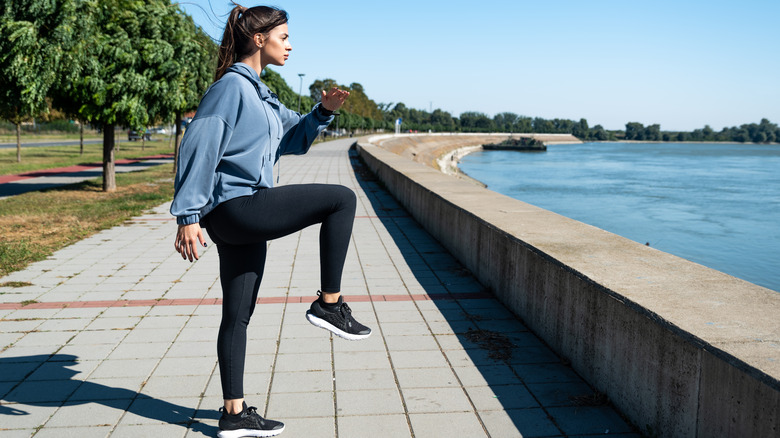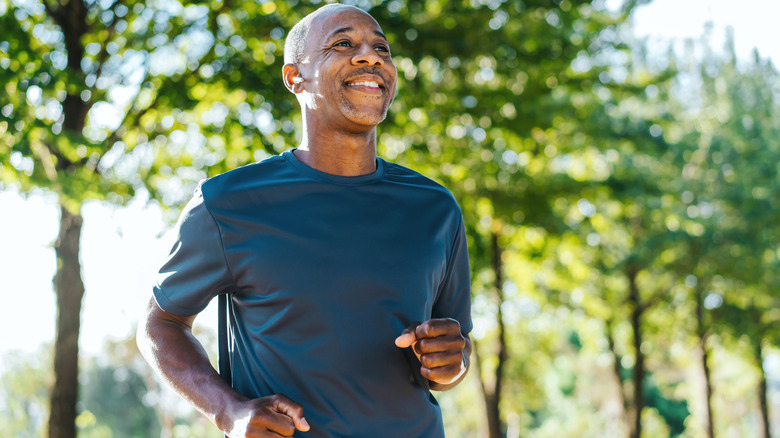The Simple Knee Exercise That Can Protect Your Overall Health After Turning 50
One in four adults over age 65 falls each year, making it the leading cause of injury, according to the Centers for Disease Control and Prevention. Although falling might cause some bumps and bruises in younger people, falls can be potentially life-threatening among older adults. People in their 50s might believe their fall risk is a decade or two away, but a strength and balance program now can prevent falls later in life.
One exercise that's particularly good for preventing falls is a weighted high knee exercise. "This exercise is cardio-intensive, raising the heart rate and enhancing cardiovascular endurance, which strengthens the heart and improves circulation," said Dr. Michael Masi, a physical therapist and strength coach, in a Health Digest interview.
This exercise also builds strength and improves your balance. It's already a challenge for some people to stand on one leg without holding onto something. You're required to engage your core and the small muscles of your feet to steady yourself. "Adding weights increases the intensity, making it especially effective for building or maintaining muscle mass as well as increasing bone mineral density," Masi said.
Exercise is important in preventing falls
You begin to lose muscle mass starting at age 30, and this muscle loss accelerates as you get older. This might make it more difficult to walk and perform daily tasks like emptying the dishwasher. Masi says maintaining muscle as you age can reduce your risk of falls and early death. If you haven't exercised throughout your life, Masi says that starting an exercise program can improve your longevity. "Just going from 0 to 3 hours of exercise each week could lower your all-cause mortality by upwards of 50%."
Exercising in your later years takes a long-term commitment. In a 2018 meta-analysis in JAMA Internal Medicine that pooled the results of 40 studies and more than 21,000 people, exercising for at least a year can lower your risk of falls by 12%. More importantly, you can reduce your risk of injury from a fall by 26%.
Masi adds that strength training provides additional benefits. "Since muscle is more metabolically active tissue, adding muscle mass can reduce the risk for metabolic conditions and promote healthy weight management," he said.
How to do a weighted high knee exercise
It's best to start this high knees exercise without weights until you're comfortable balancing on one foot. Begin standing with your feet about hip-width apart, feeling the grounding of both feet on the floor (you can do this barefoot if you're not using weights). Slowly shift your weight to your left foot, steadying yourself using the muscles of your left leg as you begin bending your right knee. If this feels unsteady for you, place one hand on a countertop or a wall for balance.
Draw your right thigh up until it's parallel to the floor, pressing your left foot into the floor to engage the muscles in your left leg and hip. For a little bit of resistance, use your right hand to press down on your right thigh as your right hip tries to keep your thigh parallel. You might even feel your core working to stabilize you. Hold for a few seconds, then switch legs. Shoot for about 12 reps per leg.
To make this a weighted high knee exercise, hold two dumbbells at your sides or a single dumbbell with both hands close to your chest. A more challenging variation is to raise the dumbbells overhead as you march with high knees. You can also practice this exercise at home holding a water bottle or heavy book close to your chest.
What to keep in mind when starting a new physical activity
Even if you did high knees in high school, slowing this exercise down and adding weights requires you to be more mindful of how your body moves and maintains balance. What's nice about the weighted knees exercise is that you can do it every day because it doesn't necessarily require you to go to the gym. You can do this exercise while you're brushing your teeth or waiting for your tea to steep.
Masi says this consistency is important. "Your exercise should be something you enjoy that is practical to perform," he said. "If you feel like you have to will yourself into the gym each day, it will be a hard-fought uphill battle from the beginning." To continue building strength and balance, Masi says you'll need to progressively challenge your body. This might mean increasing the number of reps or sets you perform or lowering the amount of rest between sets. You could also hold your balance for a little longer.
Masi also suggests adding some other exercises to your program to challenge your body as you age. "Make sure you are adding in bouts of high-intensity, anaerobic work; meaning 90-100% effort for short durations separated by small rest breaks," he said. "This type of high-intensity interval training improves an important biomarker for longevity called your VO2 max and it has the added benefits of preventing cognitive and physical decline as we age."



